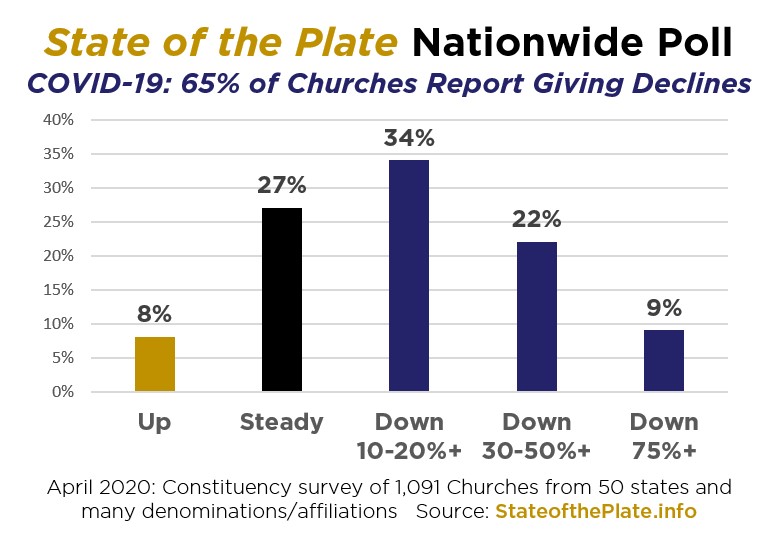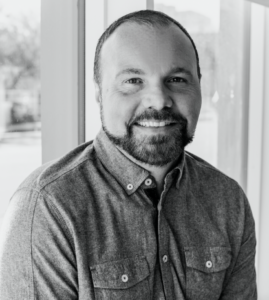We are in the midst of an unprecedented time. The Church of Jesus Christ has stayed open through plagues, world wars, and natural disasters. But, most churches around the world missed Easter this year and remain closed. Nearly every church in Arizona, where we live and minister, has also had their physical gatherings closed for two months.
I have had the honor and privilege of serving as a Senior Pastor for half of my life as I turn 50 this fall, and have never seen the widespread complexity of variables that all ministry leaders are struggling with right now. I love pastors, their families, and their church families. I have spent the past few months on the phone seemingly constantly with pastors from around the world, nation, and our own state of Arizona from every size, age, style, and theology of church that I can think of. There is real reason to have real concern for the future viability of many churches and nonprofits, just as there is for many businesses and for profits.
Based upon countless hours real-time conversations from the frontlines over a few months, I would summarize that how and when to reopen local churches is complicated for at least nine reasons:
9 Reasons Reopening Churches is Complicated
- The severity of the current pandemic has been felt differently in varying places across our nation and world. In some places the infection and loss of human life has been much higher, and in other places the opposite is true. It logically follows that how and when churches open needs to include consideration of their local context.
- Because the church of Jesus Christ is the most culturally diverse global movement of any kind in world history, the great differences between styles of church gatherings makes it virtually impossible to have a one size fits all opening strategy. This should cause us to have a lot of grace, and resist judging churches of other styles and in other places through the lens of our local culture and church experience.
- The size of each church and their largest meeting rooms vary greatly. For example, multi-site pastors I am speaking with logistically cannot even have staff meetings until gathering limitations are lifted for over one hundred whereas a small team of staff members can meet and plan more freely. Opening a church that has been closed for months is hard enough, but sequencing the opening of a multi-site church comes with far more complexity. Also, the difference between reopening the auditorium at a rural church that seats forty is very different than reopening a mega-church room with four-thousand seats.
- Many churches simply cannot survive without meeting in person. This includes many rural churches where stable high-speed internet for church online is nearly impossible, ethnic and other highly relational churches that function as extended families and are not able to afford or have the staff or budget to execute the kind of technology for church online, and churches comprised largely of older saints who are not tech savvy enough for church online. As one example, some larger churches with larger staffs and budgets are doing drive-in church in large parking lots with technology, something that smaller, rural, and ethnic churches would be hard pressed to do.
- Although some churches can open, many of the pastors I have been on the phone with for months are struggling to balance the welcoming of people and having a warm, hospitable, and good on-site, live, in-person experience. The thought of social distancing between people, no hugs or handshakes, leaving every other row empty, hiding facial expressions behind masks, vainly trying to get little kids to social distance, and not being able to sing aloud makes church at home sound like a better experience overall to many pastors.
- With the summer months upon us, this is generally the lowest attendance season of the year for churches. Pastors and other church leaders are struggling to estimate how many people will be in their church building whenever things reopen and return to some sort of normal. Additionally, momentum and forward energy is hard enough for any church to experience, let alone being closed for months, and missing Easter, which is the biggest weekend of the year, and then heading into summer.
- Pastors are really struggling as they are torn between competing interests. On one hand, people are scared, suffering, and struggling and the pastors want to be with their people and have their people be with one another to love and serve each other. The rates of depression, drinking, porn, domestic abuse, child abuse, and mental health are all going in the wrong direction so the need for the church is very real. On the other hand, pastors don’t want to put people they love at risk. In addition to the physical risk, there is also the PR risk as negative media, social shaming, and the swarming of social media could exert far more pain and pressure than most local pastors have ever experienced or prepared for. They want to have a good reputation with the community for years to come which makes the long-term implications of this pressing matter of reopening complicated.
- Most pastors see in-person and online ministry as a two-lane road going forward. Until recently, many churches only had the one lane of in-person meetings for folks to walk with Jesus on. Going forward, most pastors plan on keeping and expanding their online ministry while also resuming their in-person ministry. Ministry has changed and is not going back to years past.
- Many churches are at risk of economic collapse. Church planters I am talking to that lack a stable and mature giving base are in trouble. Those rented facilities, like schools, wonder if or when they will be able to even have a place to meet since most schools and other public buildings are closed indefinitely. Churches attended largely by older saints who give via check in the weekly offering rather than online are also struggling. Churches lacking a current clear leader (e.g. in the midst of a Senior Pastor search) or having cumbersome political governance structures that prevents quickly pivoting are in trouble. Churches that have legalisms on how they operate are struggling as now is an impossible time to do everything the exact same way you have always done it. Additionally, churches in the midst of building projects with tight timelines and great expenses are in an incredibly complicated state. Those who would read this fact and scoff at the mention of money need to remember that vision requires provision and that, like any business, even a nonprofit still has very practical ongoing needs to remain viable. The church family, like any family, has needs.
According to one study, 65% of churches have seen their giving decline while closed for Covid:
(Source: http://www.stateoftheplate.info/index.htm)
9 Observations from Pastors on Reopening
In addition to numerous conversations with pastors, I have also been on a zoom call with churches in Arizona. I am happy to report that there is great love, support, and unity among the Christian churches in our state. This groundwork was laid long before we moved here as a family, and we have been incredibly blessed by the warm reception we have received along with an outpouring of support from across the Church of Jesus Christ. I am not aware of this depth of partnership and friendship existing in any major US city quite like I have seen with Team Jesus in Arizona. It’s incredible. Pastors are sharing what they are learning, thinking, and planning to help one another so that the whole Church benefits.
Regarding the regathering of the churches in Arizona, there are at least nine observations I would make from conversations and media reports.
- There is a growing sense that churches will be opening once the stay at home order of Governor Ducey lifts on May 15th. If the stay at home order is not extended, my conversations with numerous pastors is that they are looking at how and when to reopen.
- The Attorney General of the State of Arizona has said that churches did not need to close, do not need to remain closed, and if closed can reopen whenever they decide because they are protected legally, and also considered an essential service. https://www.azag.gov/sites/default/files/2020-04/I20-008_0.pdf
- Some Arizona churches (largely Charismatic and Pentecostal) reopened for Mother’s Day on May 10th.
- At least one major denomination has sent out an email to their pastors across the state encouraging them to open by or as close to May 17th as possible once the stay at home order lifts.
- One Arizona lawmaker has publicly encouraged churches to reopen.https://ktar.com/story/3132999/arizona-lawmaker-encourages-churches-to-open-for-services-safely-sunday/
- By the end of May, hundreds of churches are also reopening in California, which has been harder hit than Arizona, and has a much more liberal Governor than the libertarian Arizona. In my private conversations with pastors across the nation, as well as a member of the White House staff, there are numerous other states possibly following suit as pastors open together as a show of unity.
https://www1.cbn.com/cbnnews/us/2020/may/not-asking-for-permission-hundreds-of-california-churches-plan-to-open-may-31 - Since some daycares have remained open, some restaurants and salons have opened, some shopping malls have opened, and even one waterslide park has already opened, it seems like all places for public gathering are trying to move forward into a new normal, not just the church. https://www.azcentral.com/story/entertainment/events/2020/05/06/golfland-sunsplash-water-slides-will-open-during-coronavirus/5180334002/
- Many schools and universities in Arizona have announced that they plan on opening at their regular time, most commonly in August. These large institutions with complex programming require a great deal of time and planning to open and are significantly more difficult to open than the local church which explains why they are a few months out from reopening. This gives hope that even the larger churches might be able to similarly open sometime this summer heading into the school year.
- Most pastors I have spoken to are seeking to provide a menu of options to minister to people as possible. This includes church online at home, small groups, medium sized groups and classes, as well as larger church services. This is done in love and an effort to allow adults to make whatever decision they believe is best for themselves and their families as needed.
Lastly, I would encourage everyone to pray for and encourage their pastor and other ministry leaders. With nerves on edge, incredible social divisions, and constant contradictory information, now is a crucial time for God’s people to seek the Spirit so they can manifest the fruit of the Spirit as Galatians 5:22-23 says, “the fruit of the Spirit is love, joy, peace, patience, kindness, goodness, faithfulness, gentleness, self-control…” More than ever, this is the kind of countercultural character of Christ that benefits everyone.
It’s All About Jesus,
Pastor Mark


